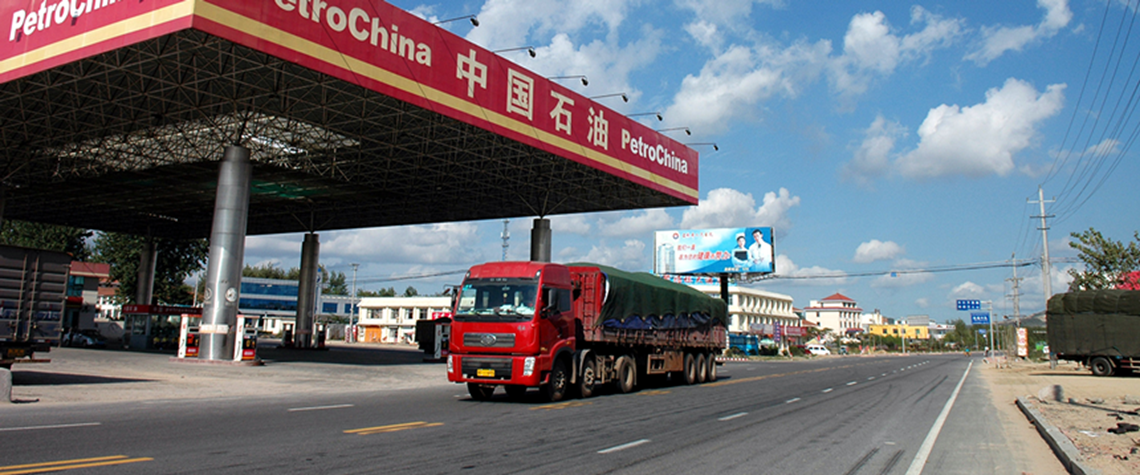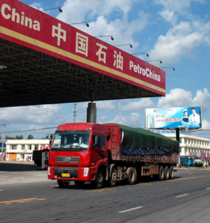By Shi Weijun
China’s state-owned oil companies have succeeded in raising domestic oil and gas production, but their refining businesses are being squeezed
China’s three NOCs continued to grow their E&P businesses strongly in H1 2024, but there were signs of weakness in downstream operations due to softer-than-expected fuel sales resulting from challenging economic conditions and greater use of cleaner transport.
China’s central government has pushed its state-controlled oil and gas giants—PetroChina, Sinopec and CNOOC to invest heavily in production to help the nation meet energy security goals amid rising geopolitical tensions. The firms were responsible for 93% of domestic oil output in H1, and their focus on this combined with higher international oil prices drove their combined net profit for the period 10.3% higher than a year ago, to RMB204b ($28.9b), while total revenue was up by 7.3%, to RMB3.36t.
+1.54% y-o-y – PetroChina’s H1 oil and gas output
Greater drilling at upstream operations contributed to record earnings for PetroChina, which increased domestic oil and gas output for the six months through June by 1.54% year-on-year, to 807.3m boe. This was driven mainly by more gas production, which expanded by 2.88% over the same period compared with barely any growth in oil.
The country’s biggest oil and gas company achieved an average realised oil price of $77.45/bl in H1, up by 4.5% from a year ago but well below the $94.65/bl in H1 2022, when global energy prices spiked after Russia invaded Ukraine.
The boost from upstream activities helped PetroChina’s net income climb to RMB88.61b, up by 3.9% from RMB85.27b in the same period last year. The company said its oil, gas and new energies business generated operating profit of RMB91.66b, representing 7.2% growth year-on-year.
Drilling drives profit growth
Similarly robust exploration at CNOOC helped the offshore-focused firm lift indigenous output to an all-time high of 247.6m boe in H1, up by 7.09% from 231.2m boe a year ago. The production growth pushed net profit for the first six months up by one-quarter, to RMB79.7b.
Brent crude traded at an average of $83.4/bl in H1, the second-highest level for the first six months of a year seen in the past decade, according to CNOOC. The explorer’s business is more heavily leveraged to drilling than larger peers PetroChina and Sinopec—which have big refining and petrochemical units—and this exposes CNOOC more to fluctuations in oil prices.
At the same time, CNOOC’s focus on upstream activities insulated it from the refining sector’s difficulties. The company continued to strengthen domestic exploration with a number of successful discoveries in H1, including seven 100mtoe-class oilfields offshore China, such as Bozhong 26-6 and Penglai 9-1.

At Sinopec, Asia’s biggest oil refiner, an improved performance from E&P operations helped H1 net profit edge up by 1.7%, to RMB35.7b. The NOC, which relies more heavily on its downstream operations for profit, increased gas production during the half by 6%, to 19.84bcm, while crude output stood 1.5% higher, at 126.49m bl.
The three companies have secured big profits from drilling fossil fuels, reaping the rewards of Beijing’s insistence they cut China’s import bill by producing more of their own oil and gas. The better homegrown growth helped China import 2.4% less oil in the first seven months of 2024 than a year earlier—only the second time this has happened in nearly two decades.
Refining operations stumble
But the earnings season also showed a different story when it came to the NOCs processing their output and selling it as gasoline or diesel, which together account for more than half of apparent Chinese oil demand.
Weakening fuel demand amid a sluggish economy saw China’s two main refiners, PetroChina and Sinopec, struggle with too much capacity relative to demand, resulting in a glut of oil products that weighed on margins in H1. Losses suffered by China’s refining sector reached a cumulative RMB18.7b for the first seven months of this year, making it the worst-performing sector in the country’s industrial economy.
At recent earnings briefings in Hong Kong, PetroChina and Sinopec each warned of an even more challenging picture for their refining units, which recorded drops in operating profit of c.40% in H1. Both firms highlighted weakness in the market for diesel, where demand is faltering because of the slowdown in construction from China’s housing market recession.
Gasoline—which makes up one-quarter of Chinese oil consumption—is facing a profound challenge from the rapid adoption of electric vehicles (EVs) and the popularity of high-speed rail. EVs and heavy-duty trucks running on LNG are set to displace 10–12% of gasoline and diesel demand this year, according to a thinktank within PetroChina parent CNPC.
For petrochemicals, capacity expansions that went online just as economic growth started to decelerate have created a glut that could persist for months. More broadly, brittle consumer confidence has seen Chinese households cut costs where possible this year—including by taking more public transport and less private car use—while long-term structural changes, from an ageing population to a new growth model less reliant on building infrastructure, pose headwinds for oil demand.
The difficulties confronting Chinese refiners were underlined by Sinopec’s bleaker demand outlook for its downstream business. The company’s crude oil throughput stood at 126.69mt in H1, and company officials said the target for H2 would be 126mt—implying annual refining throughput of 252.69mt, down from previous guidance of 260mt. Sinopec’s domestic fuel sales for this year are expected to reach 181.2mt, also down from previous guidance of 191mt. On the other hand, PetroChina maintained its full-year refining throughput guidance of 1.404b bl.
Cause for optimism
Company officials at PetroChina and Sinopec still expressed some optimism that business could improve in tandem with the economy, as Beijing prepares to step up policy support. At PetroChina’s earnings briefing, Vice-President Li Ruxin cited capacity restrictions imposed by the central government, as well as expected changes to fuel pricing and consumption taxes that will benefit wholesalers, for a more bullish outlook in H2.
Refining margins in China are expected to remain stable, and oil prices of c.$80/bl will be profitable for Chinese refiners. Further support could come from fuel export margins, which are attractive with gasoline and diesel demand rising in Asia-Pacific.
PetroChina and Sinopec should also continue to benefit from the recent slump in global gas prices, with the regional benchmark JKM down by one-quarter from this year’s high. Lower gas prices handed a windfall for the two NOCs, which depend heavily on imported gas to meet their domestic supply obligations. Both were able to reduce their import costs, which helped boost their profit margins. PetroChina’s gas segment alone saw a 19% increase in profits, to RMB16.8b.










You made some nice points there. I looked on the internet for the topic and found most people will go along with with your site.
Their international shipment tracking system is top-notch.
how to buy generic lisinopril without dr prescription
Always stocked with the best brands.